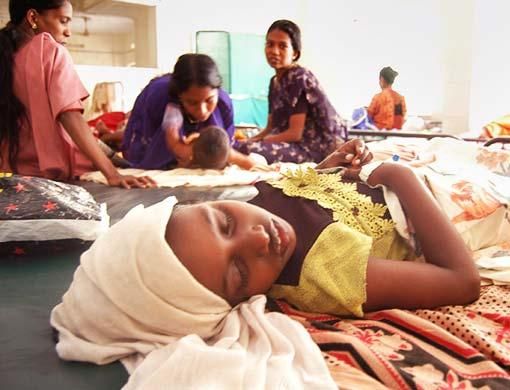Ponkunnam: At this time of the year this town in Kerala's Kottayam district would normally be bustling with activity and looking forward to the next agricultural season after the plentiful rains of June.
But these are not normal times for the people of the district or the neighbouring Pathanamthitta and Idukki districts.
All three districts are in the grip of the chikungunya epidemic and face a health crisis not witnessed in recent history, and tens of thousands of people in the district are down with fever and joint pain that are the painful symptoms of the disease.
There is still confusion over what kind of fever is affecting the masses, but what is clear is that a vast majority is already affected and life has been thrown off the rails. Worse, economic realities are staring at the affected people.
The state health system has been stretched to the limit and the private medical sector too is unable to cope with the flow of patients. Even as that gloomy picture remains, the fever is spreading to other districts.
Kozhikode, Ernakulam, Kollam and Thiruvananthapuram are now reporting significant number of fever-affected. Reports from Kozhikode say nearly 2,500 people sought treatment for fever in the district on Wednesday alone.
By official counts, the disease has taken a toll of about 100, but anyone who lives in central Kerala would debate that figure and settle for at least a few hundreds.
Even a passing visit through the chikungunya-affected belt reveals the fearful magnitude of the disease. At the Mary Queen's Hospital, about 7km from here, the medical staff struggle to cope with the sheer number of patients as hundreds of people turn up each day, in various stages of the fever.
In Kottayam district, a few hospitals have put up open sided tents for patients to queue up to see the doctors.
The waiting time can easily run into hours, considering that the patients run into hundreds. Some hospitals inform the patients, quite helplessly, that doctors cannot meet all of them.
Official statistics say that about 200,000 people may be affected by a range of fevers in the region, but that would be way off the mark considering that a good number of people in Kottayam and Pathanamthitta districts are affected by the fevers.
Schools in Kottayam district opened almost three weeks late, but attendance is still thin in the schools as teachers and students are all affected by the disease.
After Chief Minister V.S. Achuthanandan visited the area a fortnight ago, the government has made arrangements to provide free grains ration. This week, the government decided to sanction Rs 25,000 each to the next of kin of those who died of chikungunya, dengue fever and leptospirosis.
Red rashes point to new strain of virus
In a bizarre turn to the continuing spread of epidemics in Kerala, a new one has been reported in recent days, in which the patients get red rashes on the skin almost the size of tomatoes.
The fever is now locally called "tomato fever" and some patients have mentioned worms coming out of the boils that develop on the rashes. Debate is still rife in Kerala as to whether or not the fever currently raging in the state is chikungunya.
There is also a debate whether the deaths reported have been caused by chikungunya or natural causes. What appears more certain is that different types of fevers are present in the state, with differing symptoms.
Many of the patients have near identical symptoms, namely high fever, lack of appetite and pain in the joints. However, depending on whether it is chikungunya, dengue fever or some other viral fever, the severity can vary.
Paracetamol and vitamin B-complex tablets are being administered in large quantities and patients are being advised to consume lots of fluids and take rest. It takes weeks and sometimes months for patients to be completely rid of the disease.













